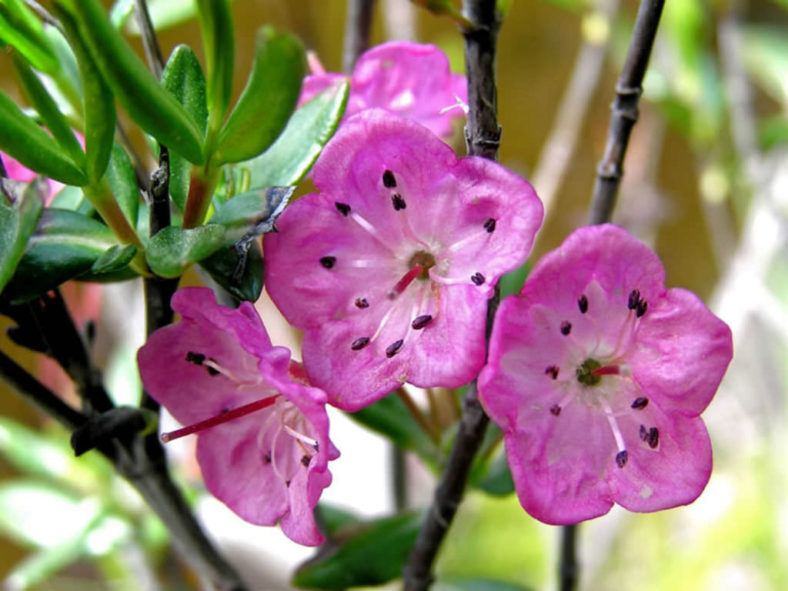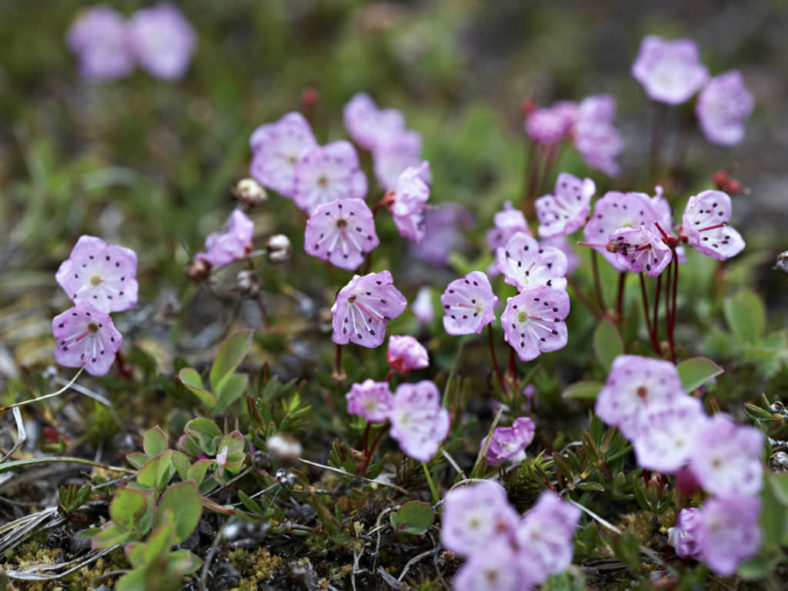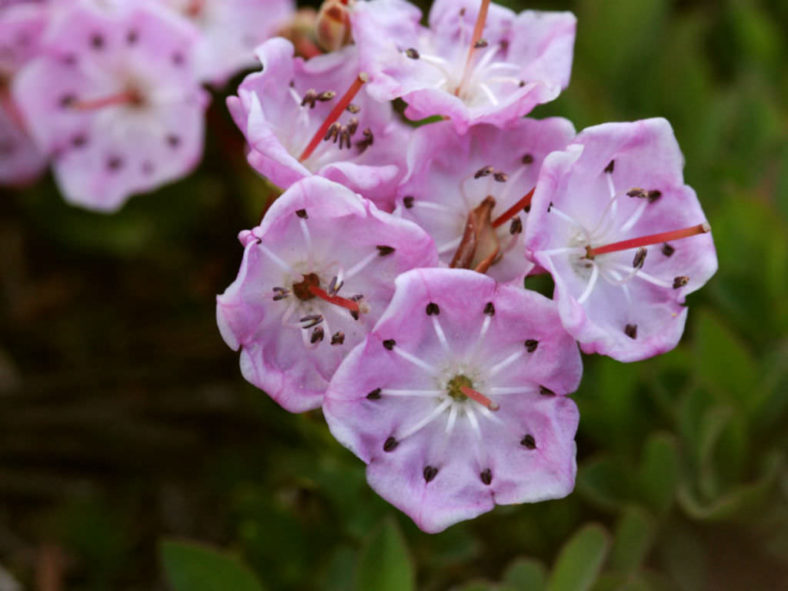Scientific Name
Kalmia microphylla (Hook.) A. Heller
Common Name(s)
Alpine Laurel, Alpine Bog Laurel, Bog Laurel, Western Bog Laurel, Western Laurel, Swamp Laurel, Western Swamp Laurel
Synonym(s)
Kalmia glauca var. microphylla, Kalmia polifolia var. microphylla, Kalmia polifolia subsp. microphylla
Scientific Classification
Family: Ericaceae
Subfamily: Ericoideae
Tribe: Phyllodoceae
Genus: Kalmia
Origin
Kalmia microphylla is native to North America and can be found throughout the western United States and west and central Canada below the subarctic.
Flower
Color: Pink or purple
Bloom Time: Summer
Description
Kalmia microphylla is a perennial shrub that grows up to 2 feet (60 cm) tall. Its branches and twigs are fuzzy in early growth and then, during maturity, become smooth and reddish-brown to grayish. Leaves are oppositely attached and not deciduous. They are distinctly lanceolate in shape with rolled edges, leathery texture, and dark green color. Flowers are pink or purple, bell-shaped, held within five fused petals that open in a cup's shape. Fruits are small, green, and hard 5-parted capsules.

Hardiness
USDA hardiness zone 3a to 9b: from −40 °F (−40 °C) to 30 °F (−1.1 °C).
How to Grow and Care
Mountain Laurel is hardy to zone 5. However, in winter, it will need to be protected with burlap barriers to block the winter wind in colder areas.
Purchase plants from your local garden center. Look for the hardiest varieties for cold areas. After all, the danger of frost has passed from spring to summer, plant shrubs in well-drained, moist, acidic, cool soils. Avoid windy areas, if possible. Space plants 4 to 6 feet (1.2 to 1.8 m) apart.
Keep young shrubs well watered. Keep the soil evenly moist and acidic with a layer of wood chips or evergreen bark mulch. Fertilize mountain laurel in spring with plant food for acidic-loving plants such as you'd use for Rhododendrons.
Mountain Laurel will get spindly, develop leaf spots, and have few flowers if grown in too much shade. Look for leaf spot resistant varieties if growing under these conditions. It also doesn't grow well in poorly drained soils. It's a slow grower that should only be pruned to shape the plant in spring after flowering. Dead, diseased, and broken branches can be taken out at any time. Mountain laurel doesn't have many pest problems.
See more at How to Grow and Care for Mountain Laurel.
Links
- Back to genus Kalmia
- Plantpedia: Browse flowering plants by Scientific Name, Common Name, Genus, Family, USDA Hardiness Zone, or Origin
Photo Gallery
Click on a photo to see a larger version.




